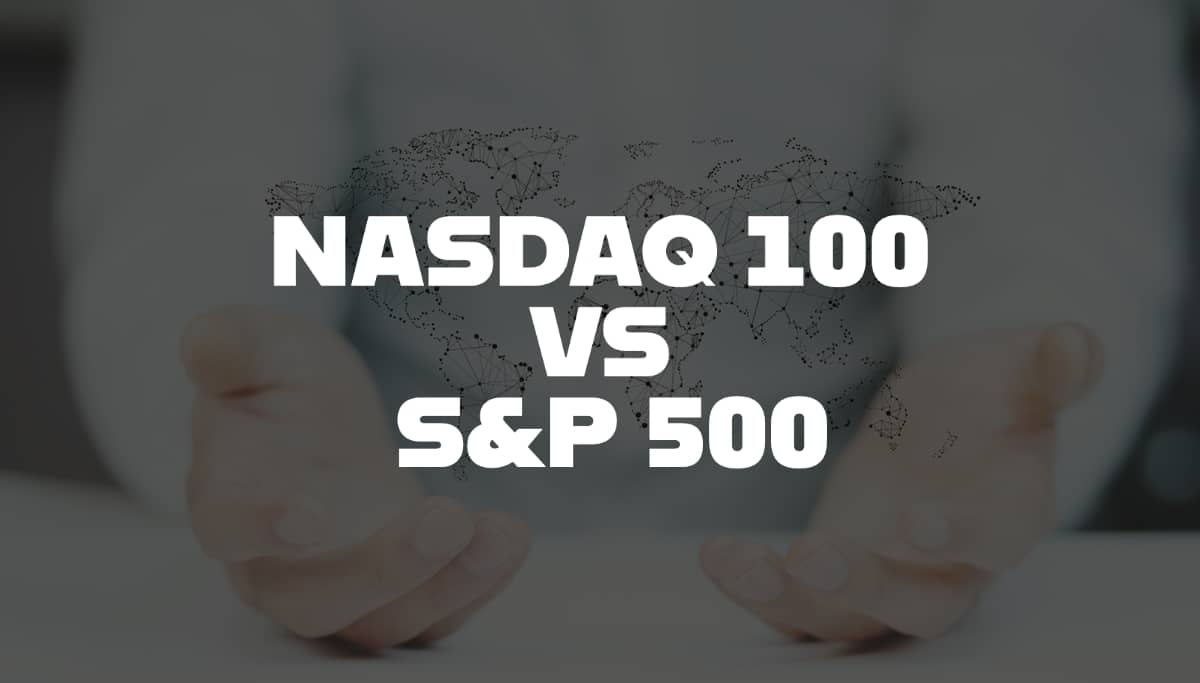Vital differences between the NASDAQ 100 VS the S&P 500
For investors trying to get involved in the stock market, but who do not want too much risk, stock indices can be a great option. Mutual funds try to follow these indices and give returns to their clients that closely represent them. They often use these indices as an investment strategy to keep someone’s wealth in track with inflation or to even exceed it. There are several of these stock indices and investors would do well to choose between them wisely. This article will be analysing two of the most popular stock indices there are, the NASDAQ 100 vs the S&P 500.
Their popularity is unsurprising. They both list a great number of large-cap companies. This includes some of the most famous and profitable companies in the world. Many of the companies they list actually overlap. However, there are significant differences that investors should keep in mind. We will give a brief overview of both indices. Then we will compare them to give potential investors some insight into how to choose between them.
A stock market index measures the overall performance of a stock market. It summarises the performance of the companies in a particular stock exchange and gives a particular value. An index can therefore represent the performance and growth of the economy, moving with inflation. Since an index bundles many stocks together, and usually very successful ones, they tend to be more reliable investments than any one stock.
Comparing the NASDAQ 100 VS the S&P 500
The S&P 500 index is long-lived by US standards, as it launched in the 1950s. It represents the stocks of the 500 largest publicly listed companies in the US. It does not represent any particular underlying stock exchange, instead taking the US market as a whole. Since the companies it lists are so numerous, they represent over 80% of the market capitalisation of the US. It gives a wide overview of US stock markets. The sectors it represents include technology, healthcare, consumer goods, financial services, communication services, and more.
The difference between the NASDAQ 100 index vs the S&P 500 is quite apparent. The NASDAQ 100 is first of all much newer, having started in 1985. The NASDAQ itself is a stock exchange. It lists companies on both US soil and abroad. The NASDAQ 100 index represents the 100 largest non-financial companies the stock exchange lists. It represents sectors such as technology, consumer services, consumer goods, healthcare, and industrial goods.
Since the NASDAQ 100 does not focus on financial companies, it has a lot more room for tech stocks. Tech is the sector that is growing most rapidly in the current period. Therefore the NASDAQ index represents some of the fastest-growing companies in the world, including the FAANG companies. In fact, technology represents around 57% of the value of the NASDAQ 100, while it represents around 27% of the S&P 500.
The NASDAQ 100 has significantly outperformed the S&P 500 in recent years. The NASDAQ 100 vs S&P 500 historical returns differ significantly. Since the 2008 financial crisis, the average annual growth rate of the NASDAQ 100 (16%) has certainly been greater than its competitor (8%). A comparison of a NASDAQ 100 vs S&P 500 chart of the growth rate by year would show the difference quite handily.
The high point of returns the NASDAQ 100 reached in a single year was 21%, while the S&P 500 reached 14%. The 10-year average return in this period stood at around 5% for the S&P 500, while being at 9% for the NASDAQ 100. The total returns of the last 10-year period has been 358% for the NASDAQ 100, while they were at 177% for the S&P 500. The difference between the returns on the 2 indices is clearly very sharp.
The tech boom
What is the reason for this stark contrast? As we mentioned earlier, the NASDAQ 100 has a few of the world’s largest tech companies. The last decade and a half have been their biggest boom periods. They have completely undone many old industries. For example, streaming has greatly reduced DVD rentals and even the cinema industry. Online shopping has hurt stores with physical locations selling a wide range of goods.
It is understandable why these industries are making such great headway at the current period. It would follow then that the NASDAQ 100 would perform so well in this period. The NASDAQ has also not limited itself to only American companies, so it is able to select profitable companies from around the world.
While this boom period still lasts for the tech industry it only makes sense that the NASDAQ 100 will keep growing at its current pace. Therefore, for the time being, the NASDAQ 100 is likely to keep outperforming the S&P 500.
The downside for the NASDAQ 100
The enormous growth of the NASDAQ 100 does come with a cost. If the tech industry proves to be a bubble or slows down in the coming years, then the parity between the two indices will likely be greater. To illustrate this further, when the dot-com bubble burst in the early 2000s, the NASDAQ 100 dropped by 38%, and the S&P 500 by 23%. The 2008 financial crisis brought about a similar pattern, though the difference was not quite as obvious.
Furthermore, since the NASDAQ 100 represents far fewer companies than the S&P 500, it is influenced by a smaller number of companies. FAANG stocks allocate over 30% of the value of the NASDAQ 100, while only allocating 14% of the value of the S&P 500. This means that one of these larger companies faltering could have a far greater effect on the NASDAQ 100.
These companies have had particularly significant growth in the last 15 years, contributing to the index’s growth. Apple and Netflix, for example, have had an average annual growth exceeding 40%. It would be hard to keep up this phenomenal growth, and there may come a period where market conditions change. It thus appears that while the NASDAQ 100 offers greater growth opportunities during boom times, it is more volatile and likely to falter during a recession. The S&P 500 by comparison has a wider overview of the US equity market. It has its basis on the growth of far more companies and industries that have been long-lived. Many of these provide reliable growth as they have done for numerous decades in the past.
Conclusions of the NASDAQ 100 vs the S&P 500
Overall, which is the better index between the S&P 500 vs the NASDAQ 100? The answer does not appear to be straightforward. During boom times, especially for the tech sector, the NASDAQ 100 does better. If you want quick profitability, then it may be for you. However, if you want greater stability and a more reliable investment, the S&P 500 would be for you. It is more recession-proof and less volatile by comparison.
The post Vital differences between the NASDAQ 100 VS the S&P 500 appeared first on FinanceBrokerage.






































